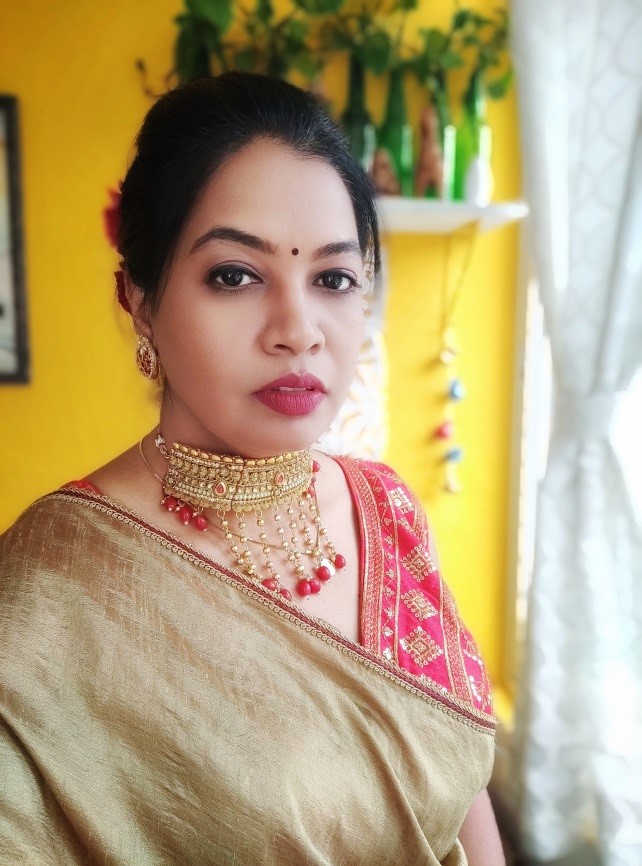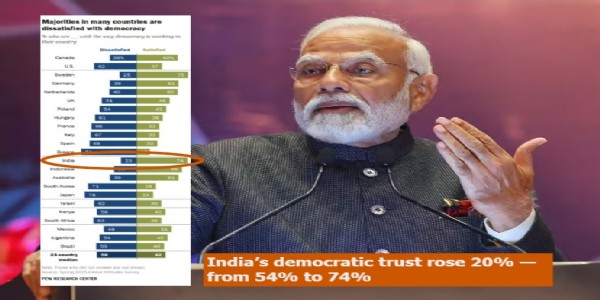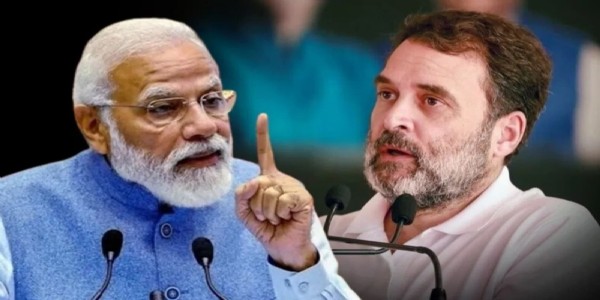Ancient Indian Education System - I
Total Views | 314
The ancient Indian education system from the Vedic times had as its main goal the development of personality in all its aspects, secular as well as spiritual. It was considered to be a Samskara-& process of refinement. According to the ancient conception, the inherited and acquired characteristics of an individual had to be properly disciplined and channelized so as to serve the four ends of Man, or Purushartha-ethics and morality or Dharma, the economic and political obligation-Artha, the sublimation of desire and the sex Instinct-Kama, and finally Salvation-Moksha. (Dharm-Arth-Kaam-Moksha)
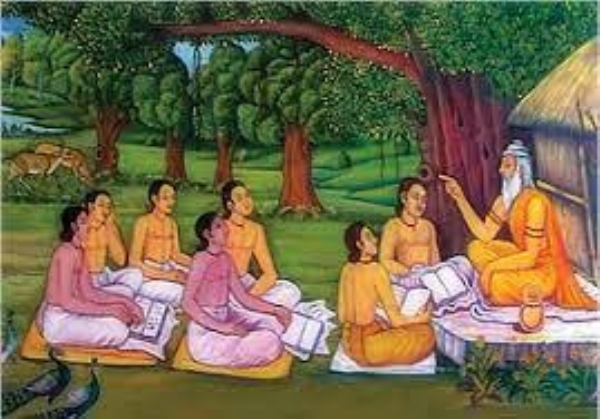
Education therefore meant a proper conditioning of the body and the mind of the individual. To "educe" or bring out the inherent potentiality and help the individual to adjust himself to the changing condition, the educational system aimed at the transformation of the individual even from the mother's womb by proper Samskara or ceremonies. The elementary education was imparted up to the eighth year and after the initiation ceremony, the higher education was imparted according to the capacity and needs of the individual. The student was expected to lead a life of strict celibacy or Brahmacharya until his course of study was completed. Then he had to travel and acquire a knowledge of the world and become a Snataka or a graduate.
The relations between the teacher and the pupil were never impersonal or based on monetary considerations in the Vedic times. The Dharma Sastras expressly condemn the teacher who imparts education for a stipulated fee and say such education benefits neither the pupil nor the teacher. After the teacher has given permission to the pupil to go back to his home and set up a family, the student may show his gratitude by making an offering to the teacher according to his capacity.
The early Hindus considered education as a life process and divided the life of an individual into four stages to each of which different duties were assigned.
1. Brahmacharya-Student life- In the first stage the mind was opened & disciplined and the body was made fit to carry out the orders of the mind.
2. Grihastha(householder)- In the second, the individual put the principles he had learned into practice and realized their true nature thus becoming pure in mind and body,
3. Vanaprastha (Forest Dweller) in the third turned his attention inward to understand the nature of the eternal self & meaning of existence.
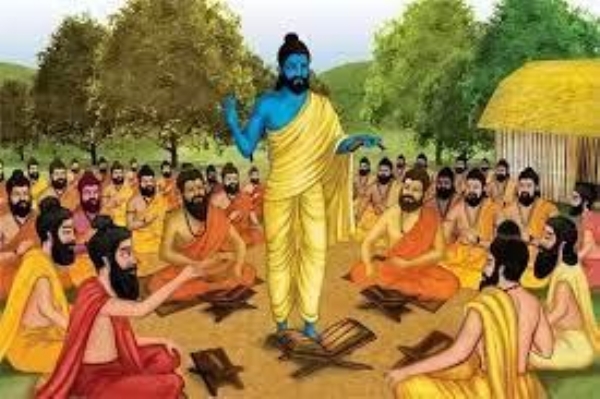
In the age of the later Vedic literature, there were Forest Universities associated with the descendants of the Rishis. Epic poems like the Ramayana and Maha Bharatha give descriptions of Ashrams under a Kulapati. In the Ramayana, we are told, that Ayodhya was a great educational center. The students there had formed a Student Federation called Mekhalinam Sangha which could approach- the King to express their grievances and their opinions on public matters. There were also hostels or Avasathas for students and several associations like Vadhu Sangha for lady students, Nataka Sangha for enacting dramas, etc. The biggest Ashram of the Ramayana times was that of Bharadvaja at Prayaga.
With the growth of cosmopolitan cities and towns, Universities came into existence, throughout India. In the succeeding ages Taxila, Banaras, Nalanda, Pataliputra, Valabhi, and Dasapura in North India; Kanchi, Behr, and Belagami in South India became famous Ghatika-Sthanas or Universities. The earliest of such Universities was Taxila, which for more than five centuries held the pride of place in the North-West.
The term " university " as used here simply means a center where higher education is imparted to aspiring students. It does not connote all the different features possessed by the universities in the East and the West today. There were a number of important features in these universities, which do not find a parallel in our modern institutions going under the name. In my upcoming posts, a brief account of these universities will enable the reader to have some idea of the education imparted in these institutions during the long period of about 2,000 years beginning with the last century B.C. and ending with the 12th century A.D. It is hoped that a perusal of these posts will enable everyone to compare our present institutions with those of ancient India and realize that the centers of higher learning in ancient India were unique in their organization and scholarship during those distant times when elsewhere in the world very few had thought of organized, education at the university level.
Indeed social efficiency was one of the aims of Ancient Hindu Education. From the modern point of view, a socially efficient man is one who is not a drag on his society and who far from interfering with the efforts of others, contributes to the progress and development of the society from which he has freely received nourishment for his body and soul. Hence every student was taught the rights and the duties holding all together (Dharma) and even an advanced soul had no right to give up the duties pertaining to its position.” Infinity is bliss and only one who obtains bliss perform social duties” (Rgveda)

Education therefore meant a proper conditioning of the body and the mind of the individual. To "educe" or bring out the inherent potentiality and help the individual to adjust himself to the changing condition, the educational system aimed at the transformation of the individual even from the mother's womb by proper Samskara or ceremonies. The elementary education was imparted up to the eighth year and after the initiation ceremony, the higher education was imparted according to the capacity and needs of the individual. The student was expected to lead a life of strict celibacy or Brahmacharya until his course of study was completed. Then he had to travel and acquire a knowledge of the world and become a Snataka or a graduate.
The relations between the teacher and the pupil were never impersonal or based on monetary considerations in the Vedic times. The Dharma Sastras expressly condemn the teacher who imparts education for a stipulated fee and say such education benefits neither the pupil nor the teacher. After the teacher has given permission to the pupil to go back to his home and set up a family, the student may show his gratitude by making an offering to the teacher according to his capacity.
The early Hindus considered education as a life process and divided the life of an individual into four stages to each of which different duties were assigned.
1. Brahmacharya-Student life- In the first stage the mind was opened & disciplined and the body was made fit to carry out the orders of the mind.
2. Grihastha(householder)- In the second, the individual put the principles he had learned into practice and realized their true nature thus becoming pure in mind and body,
3. Vanaprastha (Forest Dweller) in the third turned his attention inward to understand the nature of the eternal self & meaning of existence.
4. Sanyasa - Hence the ancient Hindus the purpose of education was to expand the life of the individual until it should comprehend this existence through participation in the all-pervading spiritual activity. Thus the “Gita” (sacred text) urges that the individual should perform action so that he may learn by doing.

In the age of the later Vedic literature, there were Forest Universities associated with the descendants of the Rishis. Epic poems like the Ramayana and Maha Bharatha give descriptions of Ashrams under a Kulapati. In the Ramayana, we are told, that Ayodhya was a great educational center. The students there had formed a Student Federation called Mekhalinam Sangha which could approach- the King to express their grievances and their opinions on public matters. There were also hostels or Avasathas for students and several associations like Vadhu Sangha for lady students, Nataka Sangha for enacting dramas, etc. The biggest Ashram of the Ramayana times was that of Bharadvaja at Prayaga.
With the growth of cosmopolitan cities and towns, Universities came into existence, throughout India. In the succeeding ages Taxila, Banaras, Nalanda, Pataliputra, Valabhi, and Dasapura in North India; Kanchi, Behr, and Belagami in South India became famous Ghatika-Sthanas or Universities. The earliest of such Universities was Taxila, which for more than five centuries held the pride of place in the North-West.
The term " university " as used here simply means a center where higher education is imparted to aspiring students. It does not connote all the different features possessed by the universities in the East and the West today. There were a number of important features in these universities, which do not find a parallel in our modern institutions going under the name. In my upcoming posts, a brief account of these universities will enable the reader to have some idea of the education imparted in these institutions during the long period of about 2,000 years beginning with the last century B.C. and ending with the 12th century A.D. It is hoped that a perusal of these posts will enable everyone to compare our present institutions with those of ancient India and realize that the centers of higher learning in ancient India were unique in their organization and scholarship during those distant times when elsewhere in the world very few had thought of organized, education at the university level.
Indeed social efficiency was one of the aims of Ancient Hindu Education. From the modern point of view, a socially efficient man is one who is not a drag on his society and who far from interfering with the efforts of others, contributes to the progress and development of the society from which he has freely received nourishment for his body and soul. Hence every student was taught the rights and the duties holding all together (Dharma) and even an advanced soul had no right to give up the duties pertaining to its position.” Infinity is bliss and only one who obtains bliss perform social duties” (Rgveda)
Bharati Web


